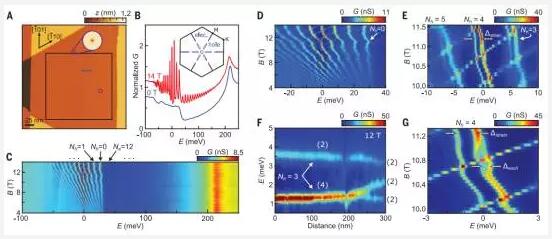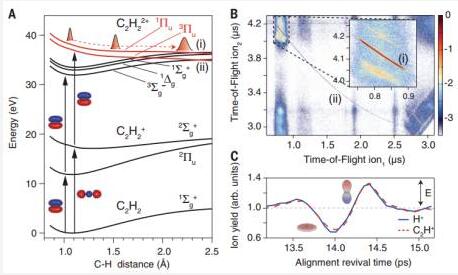Abstract 1. Dynamic creation and evolution of gradient nanostructures in single crystal metal microcubes (Dynamiccreationandevolutionofgradientnanostructureinsingle-cr...
1. Dynamic creation and evolution of gradient nanostructures in single crystal metal microcubes
(Dynamic creation and evolution of gradient nanostructure in single-crystal metallic microcubes)
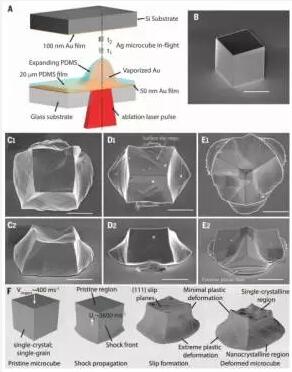
Thevamaran et al. reported the dynamic establishment and subsequent static evolution of an extremely gradient nanocrystal structure in an initially almost defect-free single crystal microcube. Extreme nanostructure transformations are caused by high strain rates, strain gradients, and recrystallization during micro-cubic high-speed impact impervious substrates. The synthesis of microcubic silver is formed by bottom-up seed growth and is selectively selected to achieve supersonic speed (about 400 meters per second) using an advanced light-collecting launching projectile impact test device. Their research provides new insights into the fundamental deformation mechanisms and the effects of crystal symmetry on the shape of the sample produced by high-speed impact. The transformation of nanostructures produced in experiments provides a new way to develop gradient nanometals for high strength and high toughness. (Science DOI: 10.1126/science.aag1768)
2. A nematic quantum Hall liquid on the surface
(Observation of a nematic quantum Hall liquid on the surface of bismuth)
A nematic quantum fluid having a function of breaking the fundamental crystal symmetry wave can be formed in the interacting electron system. Feldman et al. studied the quantum Hall states generated in the high magnetic field of Bi(111) plane anisotropic pores. The spectra obtained by scanning tunneling microscopy show that the combination of single-particle effect and multi-body Coulomb interaction can degenerate the six-fold Landau level (LL) into three valley-polarized quantum Hall states. They imaged the obtained anisotropic LL wave function and found that these wave functions have different orientations for different symmetry breaking states. The wave function corresponds to the expected pair of valleys and provides a direct spatial characteristic of the nematic electron phase. (Science DOI: 10.1126/science.aag1715)
3. "Uphill" cation transport: bionic light driven ion pump
("Uphill" cation transport: A bioinspired photo-driven ion pump)
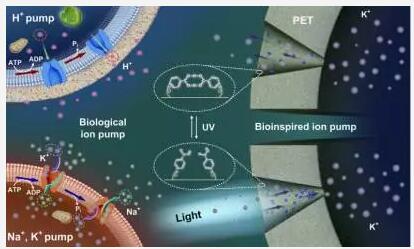
The bioion ion pump with active ion transport properties lays the foundation for many life activities. However, because of the extra energy required to achieve this “uphill†process, there are few reports on bioion-like pumps. Zhang et al. demonstrated an artificial bionic light-driven ion pump based on a single polyethylene terephthalate tapered nanochannel. The pumping process is achieved by applying zero-volt current reversal by applying ultraviolet radiation from the large opening of the cone. The light energy accelerates the dissociation of the benzoic acid derivative dimer on the inner surface of the nanochannel, thereby producing more mobile carboxyl groups. The strong electrostatic interaction between the ions passing through the nanochannel and the charged groups on the inner wall is the main cause of the migration behavior of the up-slope cation. This system provides an ideal experimental and theoretical platform for further development and design of various external excitation drives and specific ion-selective bioion pumps, with a wide range of potential applications in biosensing, energy conversion and desalination. (Science Advances DOI: 10.1126/sciadv.1600689)
4. Design of hydrogels for controlled drug delivery
(Designing hydrogels for controlled drug delivery)
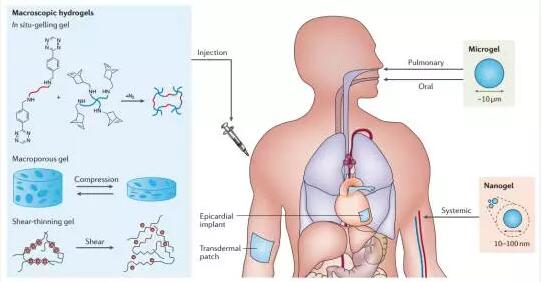
Hydrogel delivery systems can be used for drug delivery to achieve beneficial therapeutic effects and are used clinically. Hydrogels provide spatial and temporal control over the release of various therapeutic agents, including small molecule drugs, macromolecular drugs, and cells. Hydrogels serve as a platform to control drug release due to the tunable physical properties of hydrogels, controlled degradability, and the ability to protect unstable drugs from degradation. Recently, Li et al. reviewed the multi-scale mechanism of hydrogel drug delivery system design, and focused on the physical and chemical properties of hydrogel networks and hydrogel drug interactions. Li et al. discuss how different mechanisms interact and integrate to provide good control over time and space for drug release. They also collected experimental data from a number of literatures and proposed quantitative comparisons between different systems, providing ideas for providing a rational design for hydrogel delivery systems. (Nature Reviews Materials DOI: 10.1038/natrevmats.2016.71)
5. Direct detection of anisotropy in atom-molecular collisions by quantum scattering resonance
(Directly probing anisotropy in atom–molecule collisions through quantum scattering resonances)

Anisotropy is a fundamental property of particle interactions and plays an important role in the processing of cold molecules and ultra-cold molecules. In ultracold polar molecular collisions, scientists have studied long-range forces with orientation dependence. In the cold collision state, the quantization of the intermolecular degrees of freedom leads to quantum scattering resonance. Although these states have been shown to be sensitive to the details of the interaction potential, there have been no experimental observations of the effects of anisotropy on quantum resonance. Ayelet et al. directly measured the anisotropy in atom-molecular interactions by changing the quantum resonance generated by the quantum states of the internal molecular rotor. In the Penning ionization of the molecular hydrogen produced by the rotation of the molecule and the metastable enthalpy, the quantum scattering resonance was observed at a collision energy of kb × 270 mK. Ayelet et al. used the most advanced ab initio theory to demonstrate the control of the effective switching of anisotropic switches in a rotating state and to unravel the isotropic and anisotropic portions of the interaction. (Nature Physics DOI: 10.1038/NPHYS3904)
6. Pressure-guided formation of graphene on boron nitride
(Pressure-induced commensurate stacking of graphene on boron nitride)
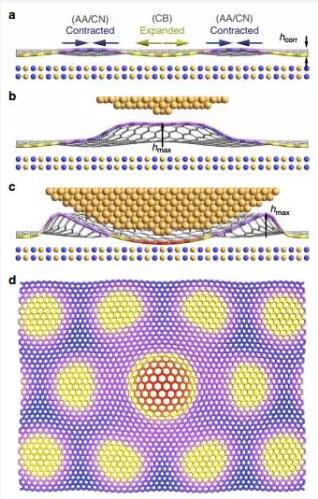
Combining atomic thickness van der Waals materials into heterostructures provides a powerful way to create artificially designed electronic devices. The strength of the interaction between adjacent layers can be easily controlled by controlling the separation of their interlayers, which can significantly affect the electronic properties of these composites. Yankowitz et al. applied pressure on the tip of the scanning tunneling microscope to achieve an unprecedented degree of control over the interlayer interaction by locally adjusting the separation of the interlayer between graphene and boron nitride. For the special case of graphene aligned or quasi-aligned on boron nitride, the graphene lattice can be locally stretched and compressed to compensate for slight lattice mismatch between the two materials. They also found that adjusting the separation of the interlayer can directly adjust the strain of the lattice and cause equal-sized stacking. This study uses hydrostatic pressure to control the separation of the interlayer, which may stimulate future research on the electronic properties of the modified van der Waals heterostructure. (Nature Communications DOI: 10.1038/ncomms13168)
7. Marketable stable perovskite solar cells
(Towards stable and commercially available perovskite solar cells)
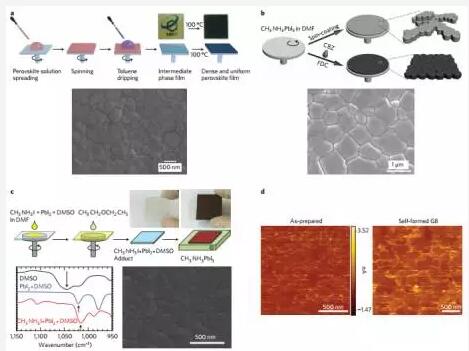
Organic cationic halide perovskite solar cells now exhibit up to 22% power conversion efficiency. However, the commercialization of these batteries faces many problems, such as a long-term stable and repeatable manufacturing method for manufacturing high-performance devices. Park et al. proposed a method for obtaining an industrially viable stable perovskite solar cell. This method has good repeatability and can well regulate the charge transport at the grain boundary and interface. They highlight how to optimize the design of the device architecture, as this is not only important for achieving high efficiency, but also for achieving zero lag and stability. They believe that reliable device characteristics are important to ensure that this technology is moving toward practical applications. They point out that perovskite-based devices can compete with silicon solar modules and also help to explore toxic materials and safety management related issues. (Nature Energy DOI: 10.1038/NENERGY.2016.152)
8. Ultrafast electron diffraction imaging of bond cleavage during secondary dissociation of acetylene
(Ultrafast electron diffraction imaging of bond breaking in di-ionized acetylene)
To directly observe the chemical reaction process, atomic spatial resolution and femtosecond time resolution are required. Wolter et al. demonstrated molecular structure imaging at 9 femtoseconds after acetylene (C2H2) ionization. A mid-infrared laser induced electron diffraction (LIED) was used to obtain a snapshot of protons leaving [C2H2]2+. Control of the ultrafast dissociation process was also demonstrated by the introduction of additional laser fields, and the different bonding kinetics of molecular orientation parallel to and perpendicular to the LIED field were resolved. These measurements are very consistent with the quantum chemical description of the field coating molecular dynamics. (Science DOI: 10.1126/science.aah3429)
This article is authorized by the new material online (micro signal: xincailiaozaixian), if other media need to reprint, please contact the new material online small series (micro signal)
Copper Press Fitting(AS3688)
Copper press fitting(AS 3688) is a kind of up-to-date.healthy.eco-friendly and safe pipeline.
Suit Medium:Cold Water, Hot Water, Compressed Air, Gas, Oil Etc
Press tool: Novopresse
Proper temperature: -20°C up to 120 °C (for drinking system and sanitary ware systems), 180 °C for solar applications
Pressure: up to 1.6mpa (16bar)
Areas of use: Drinking water, heating, rainwater, solar systems, fire extinguishing systems, sprinkler systems(wet), ship building, inter gases, cooling water pipes, compressed air(oil free),boiler, water heater
Press fitting range:
Coupling -- Straight coupling FF press, Reducing coupler FF press, Fitting reducer MF press
Elbow -- Bend 90°FM press, Bend 90°FF press, Bend 45°FM press, Bend 45°FF press
Tee -- Equal tee FFF press , Reducing tee FFF press
Other fittings -- Endcap press, Full crossover FF press, Partial crossover FM press, wallplate Elbow press
Our Advantages
* Free sample: we can provide a few free sample for evaluation.
* After-sales service: we provide after-sales technical support for clients.
* Strict Quality control: we have 100% inspection before delivery to ensure every pieces are in good quality
Production and package
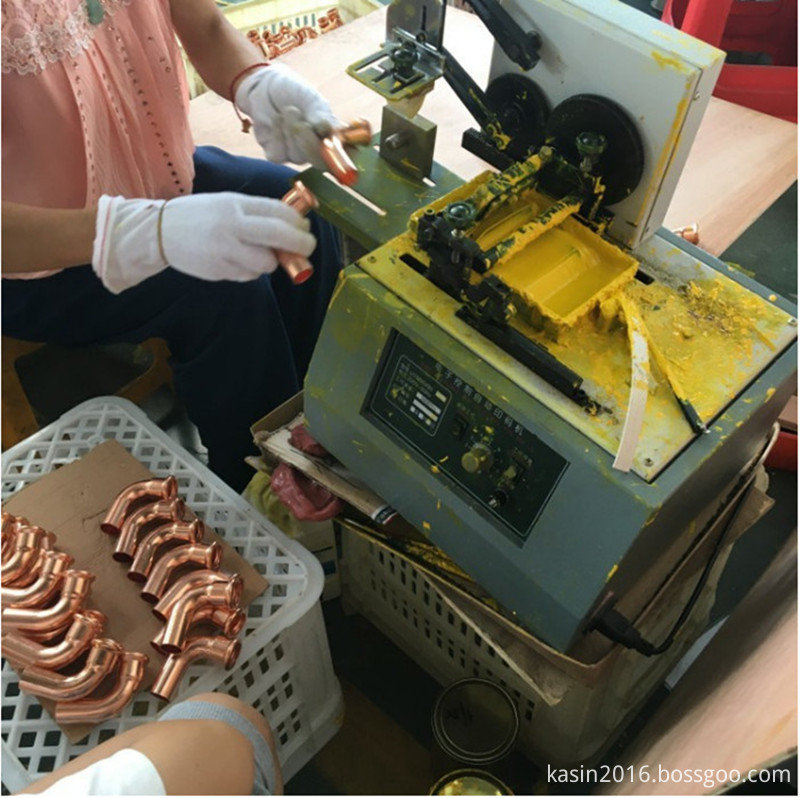
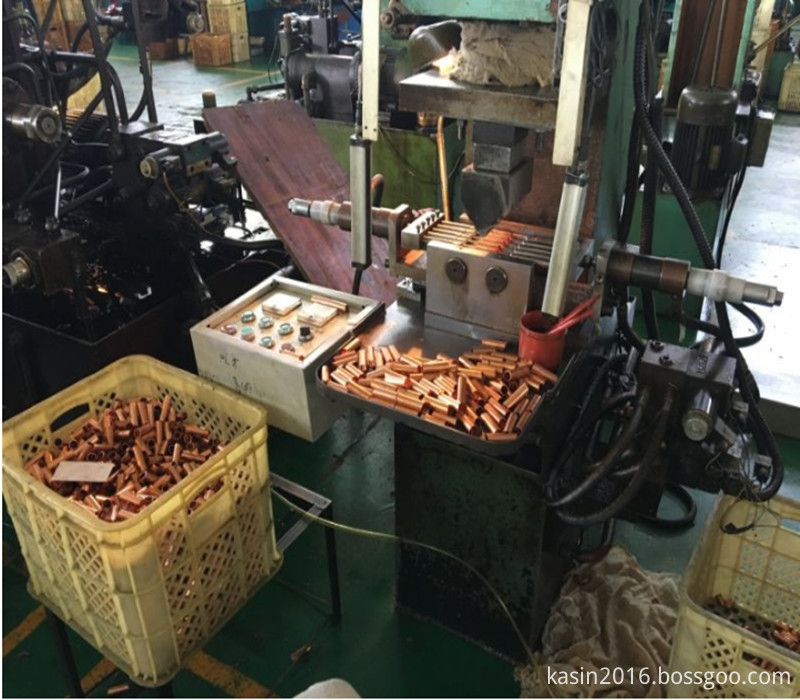
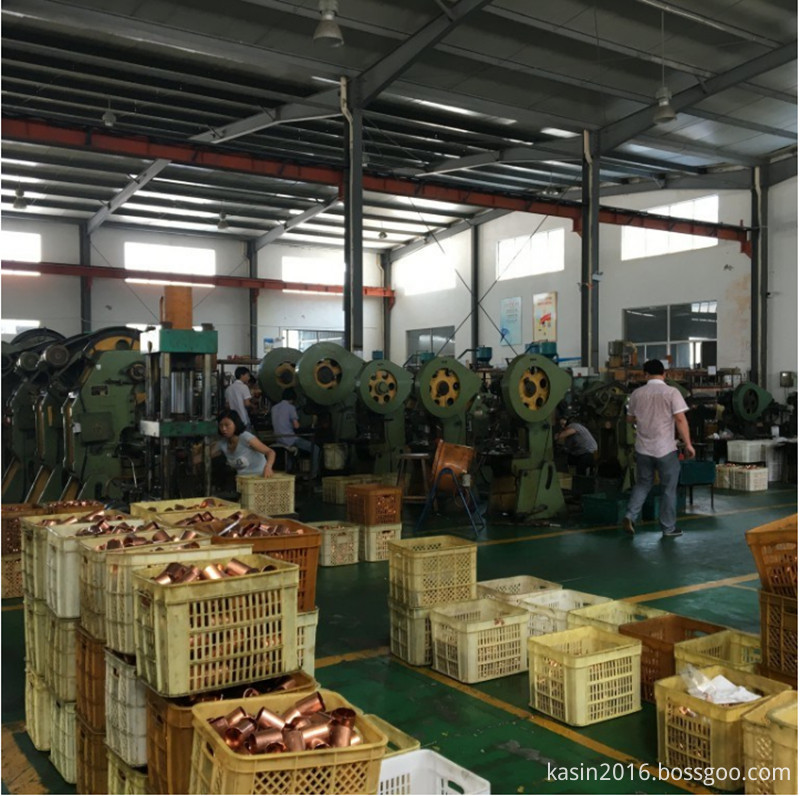

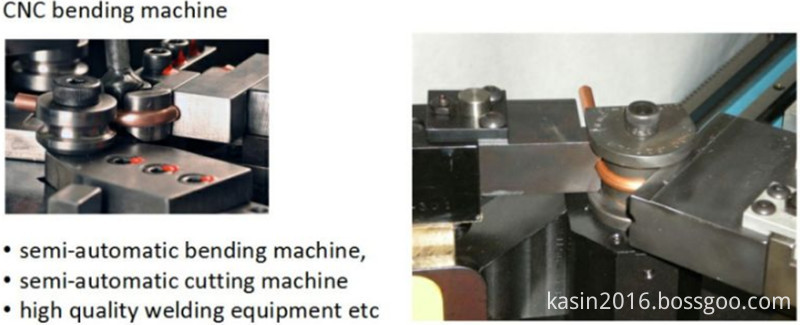
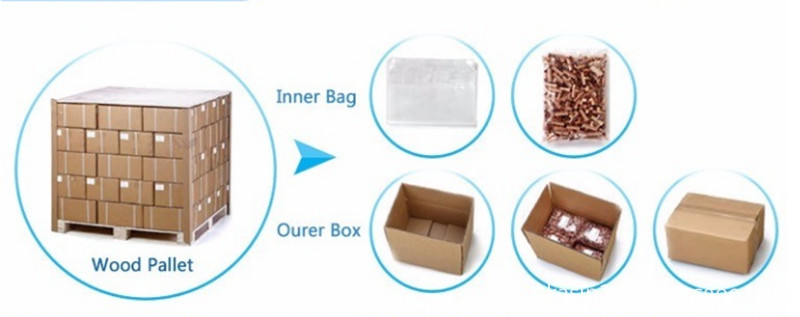
Factory
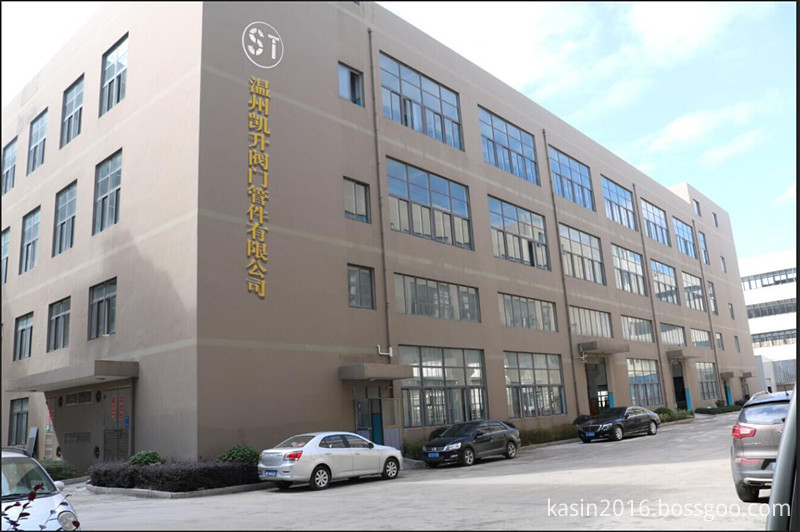
Copper Press Fitting(AS3688)
Australia copper press fitting,AS3688 copper press fitting,Copper V-profile press fitting,Copper press fitting
WENZHOU KASIN VALVE PIPE FITTING CO., LTD. , https://www.kasinvalvefitting.com

